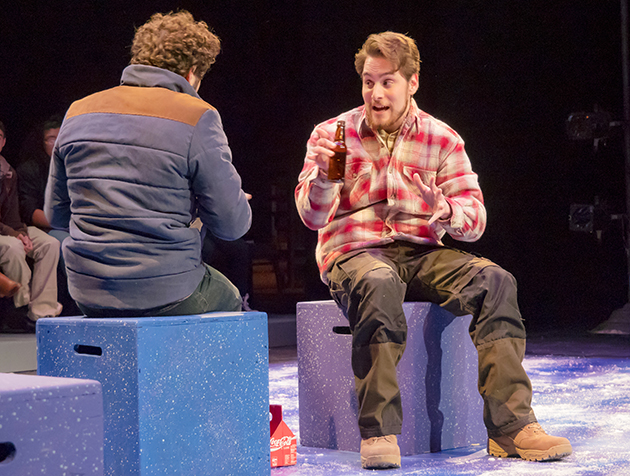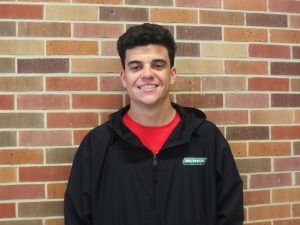Behind the curtains
Takeru Hayashi
The “Almost, Maine” production included numerous technical aspects to put on the show.
November 13, 2018
Though the cast may be all that is seen from the audience perspective, these individuals make up a small portion of those involved in putting on a play.
Technical Director Benjamin Norman is directing his first play at the university, “Almost, Maine,” which is scheduled to show Nov. 13-16 at 7:30 p.m. in the Vonnie Borden Theatre.
Norman shared his feelings on the process of putting on the “Almost, Maine” play.
“It has been a rewarding process collaborating with so many of our students,” said Norman. “Not only is the entire cast made up of our student population from all different majors and classifications, freshman to graduate student, but I have also had the opportunity to work with student designers and technicians.”
Norman explained some challenging aspects of putting on the play.
“The most difficult aspect of this production would be creating a safe space for dangerous work,” said Norman. “We created a nurturing and supportive environment where performers could feel safe to take risks in the rehearsal process to see where it would lead the character development and scene. This is not an easy task, but everyone involved understood that by developing that trust it would lead to better storytelling and thus a more engaging show for our audience.”
Shirley Mier, a senior general studies major, worked on many of the processes behind the scenes as the prop designer for “Almost, Maine.”
“As a properties designer, I sort of fill in the gaps between costumes and set dressings,” said Mier. “So if a character has a book they have to use on stage or if a character uses a cane to walk with, that would fall under what I am responsible for. Basically, anything the actors have to pick up and use. If it’s part of the set or part of a costume, that’s a different element of design.”
Students are involved in numerous aspects in the production of the play such as Kaelen Novak, a senior biological sciences major who worked on costume design.
“For this production, the hardest part was getting all the pieces together and organized for every character,” said Novak. “In all, there are 21 separate characters in the show, each of which needs a different costume composed of many layers to emulate what someone would wear in rural Maine in the middle of winter. The sheer amount of clothing gets overwhelming if you don’t have a clear plan, a design and a list of what you are looking for each character.”
The nuances of the play interested Novak throughout the production.
“My favorite part of designing this show was finding ways to make each character different and designing not only for what the character reveals through their dialogue but also some of the backstory only mentioned in the stage directions or briefly in a conversation,” said Novak. “Being able to do this on so many varied characters was very interesting.”
According to Mier, prop design is imperative in building an immersive world for the audience to experience.
“Anything that characters interact with while onstage has to be believable, recognizable, safe and consistent with the overall vision of the world these characters exist in,” said Mier.
Mier feels that the property designing aspect of the production is sometimes overlooked.
“I feel that properties are something that people who don’t know very much about theatre arts can easily overlook,” said Mier. “It can be hard to visualize who actually makes that portion of the production happen and what exactly their job is. I’ve been working on prototypes of props, writing different lists of props, and generally organizing my duties to the production since June. All in all, the technical side of production generally takes longer than what most people would expect.”









